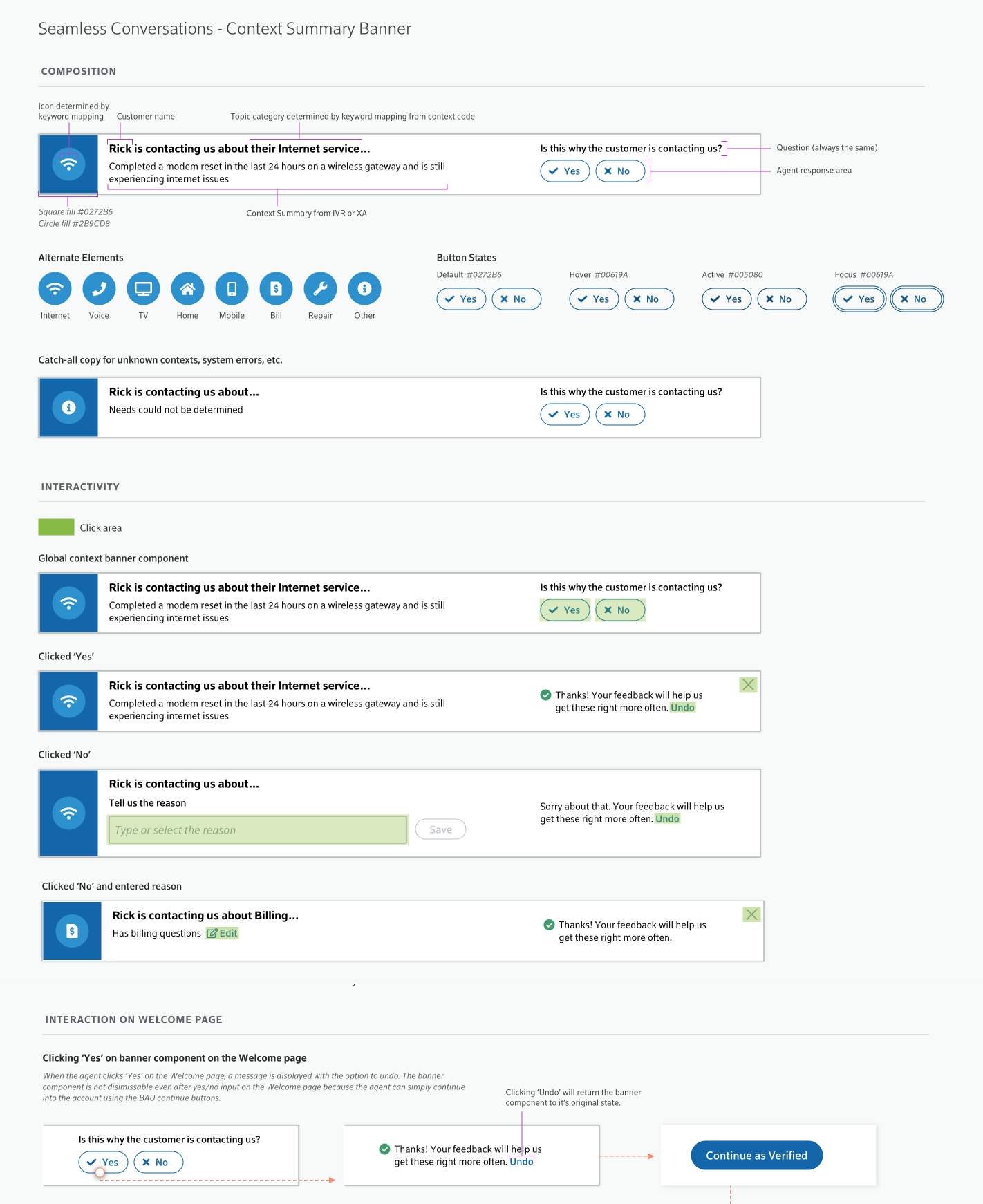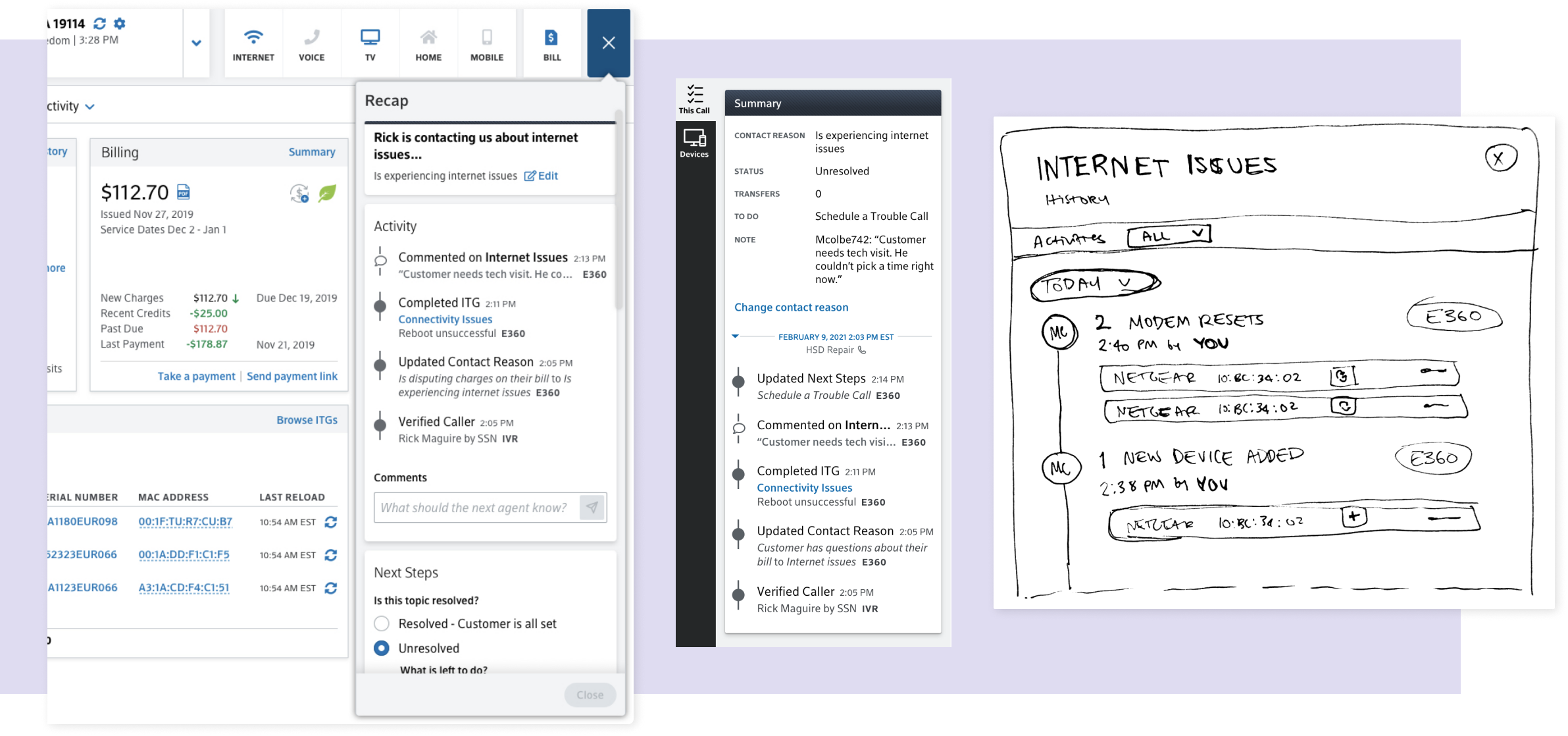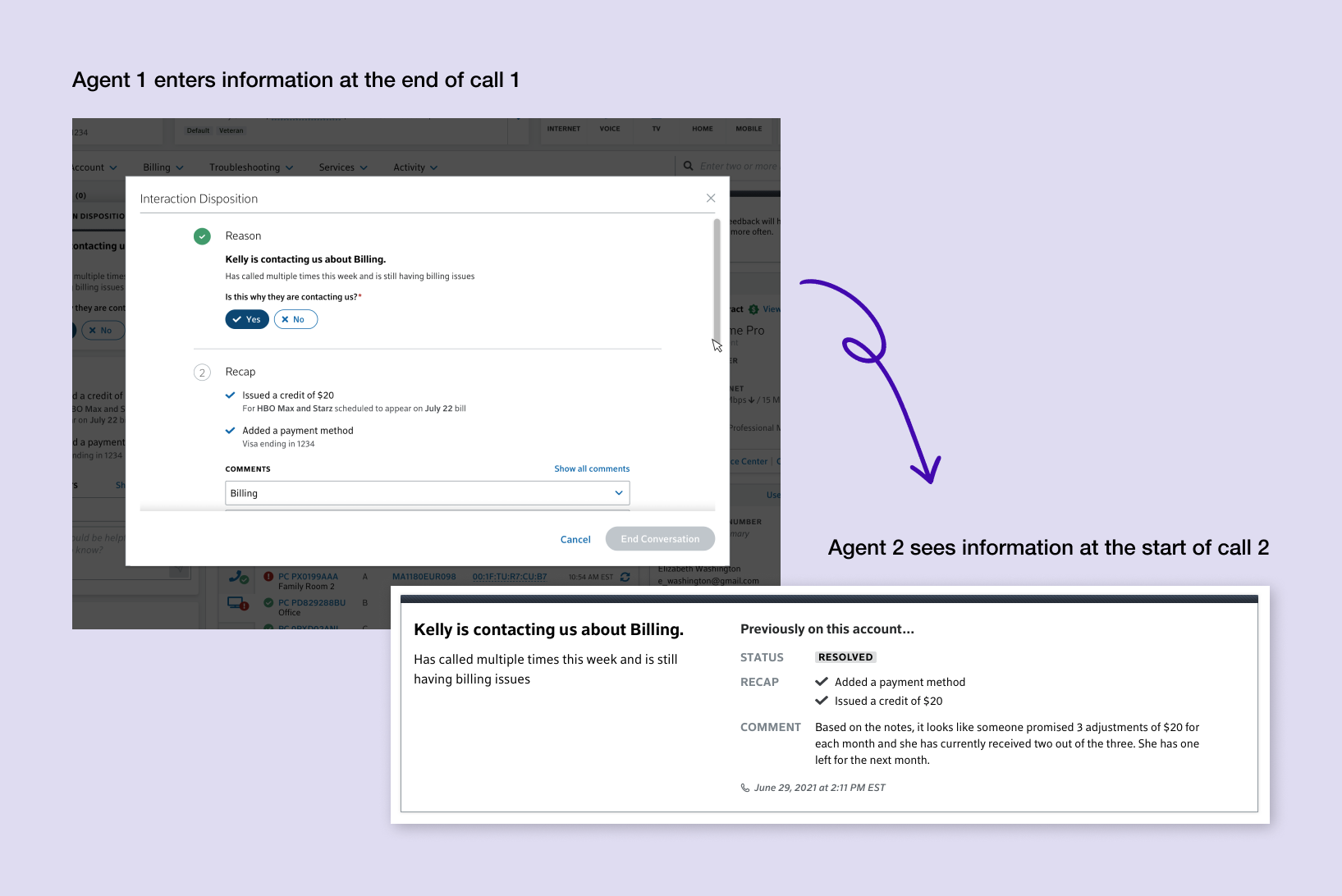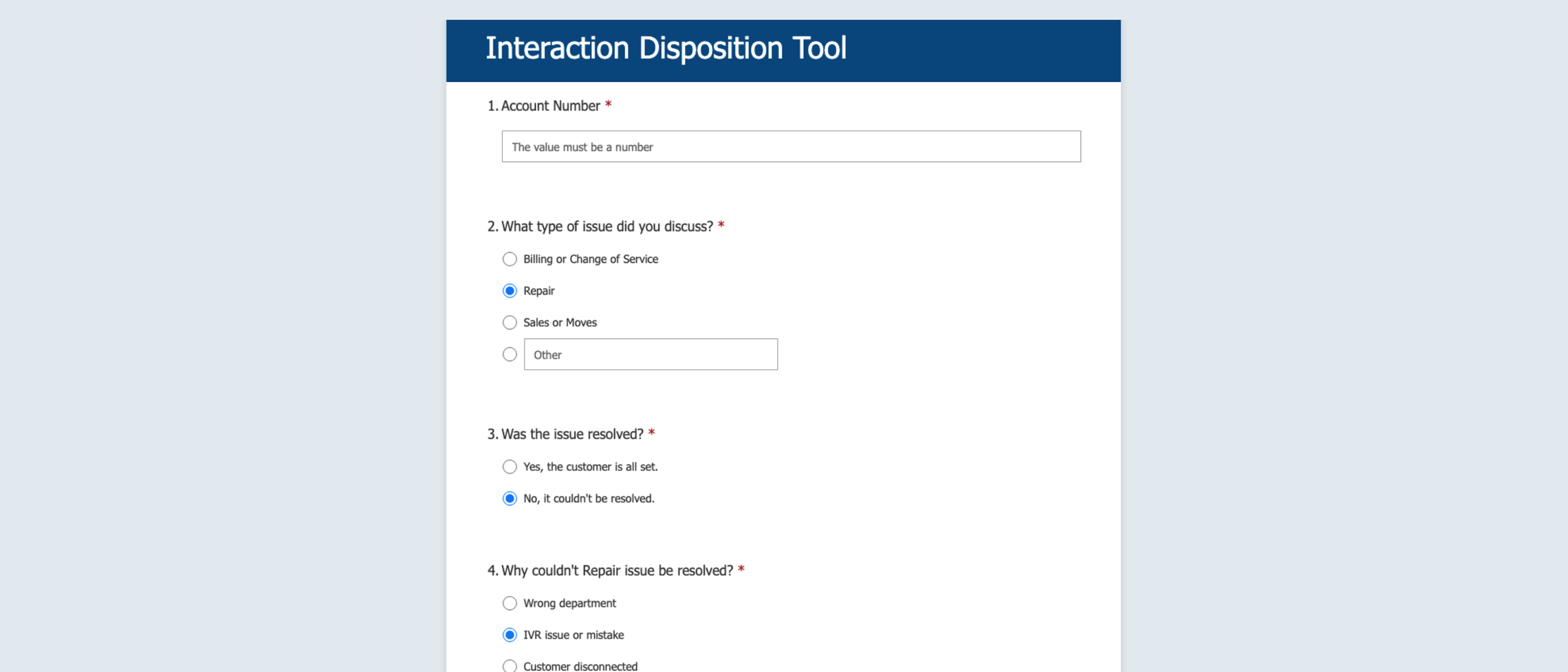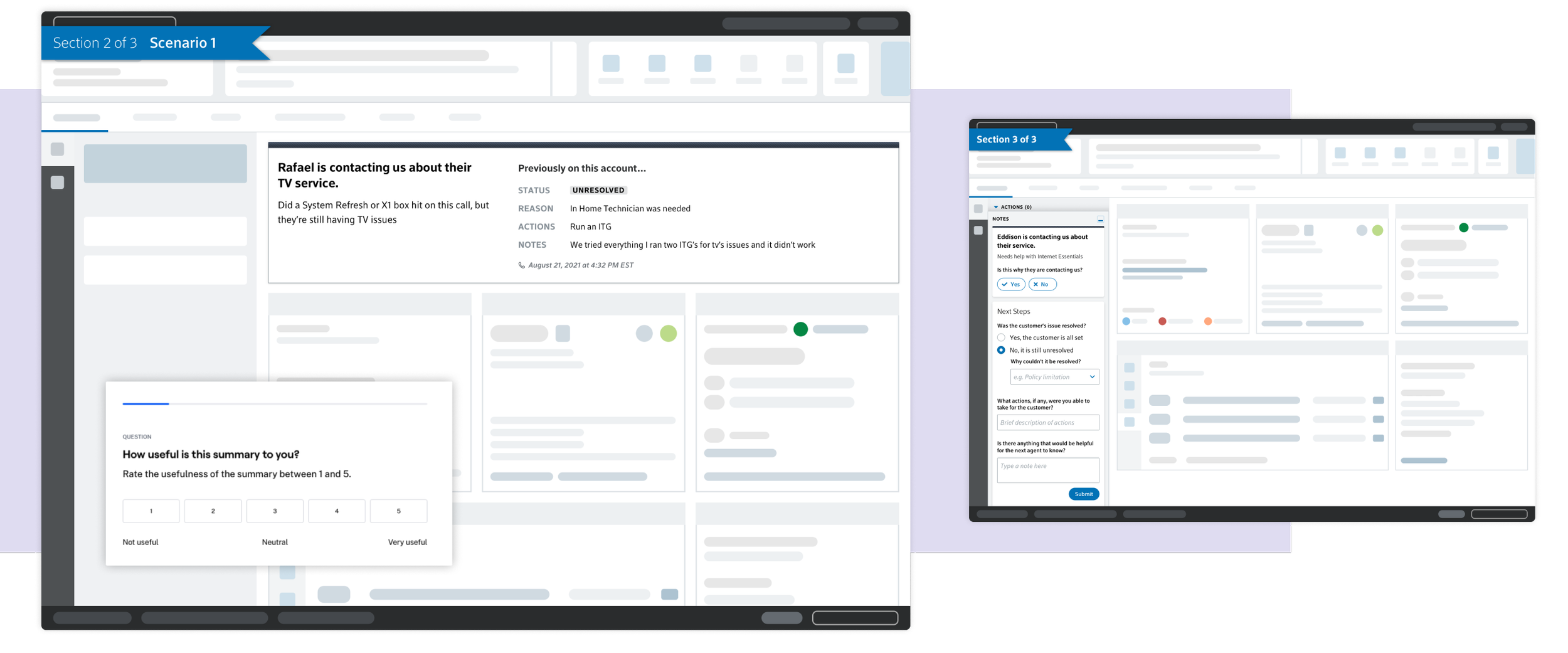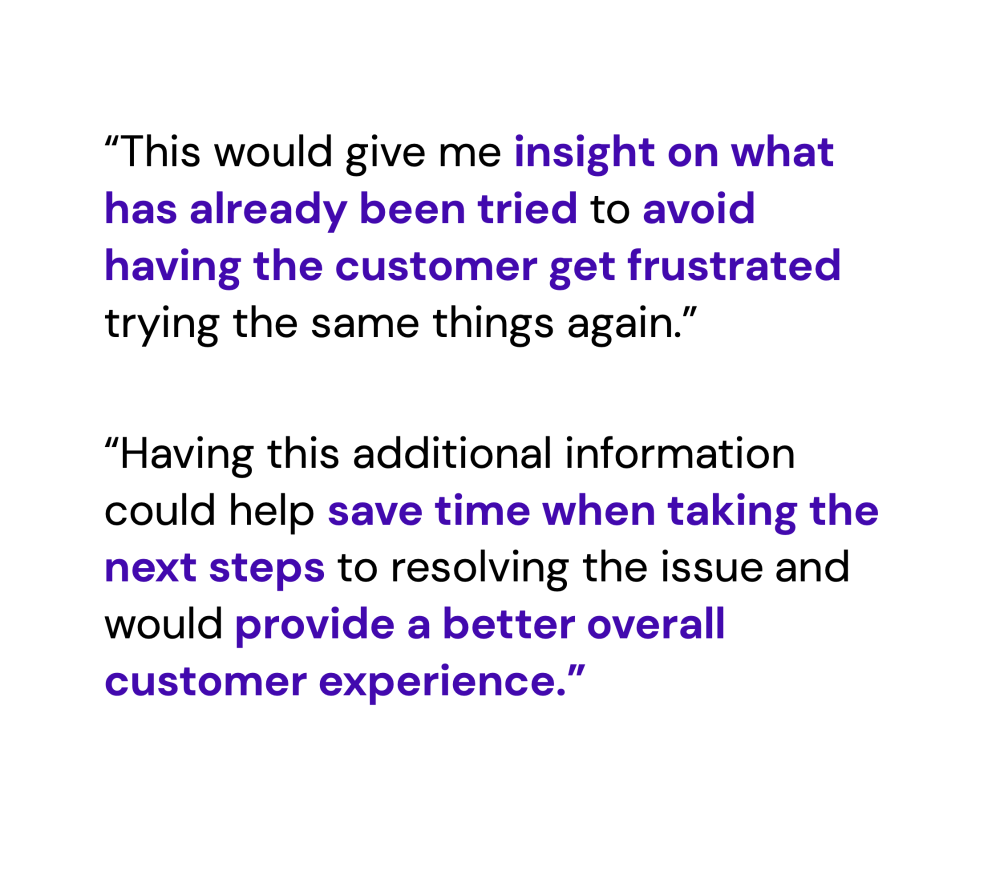Seamless customer service
Using data to improve customer experience and drive efficiency in a digital-first world
As the UX designer for this project, I conducted all design and research activities from initial conception to final MVP. I collaborated with a Product Owner from the client org, and worked with guidance from a Design Lead.
The client, a Fortune 500 telecom company, had begun logging a series of 5 standardized data points, captured and sequenced at every customer service touchpoint.
This project used that data to design transformed functionality for frontline agents, with the goal of creating a seamless care experience for call center agents and their customers.
Ideation
Initial brainstorming
Sketching
Defining terms and mapping data points
Testing assumptions: agents should be able to select or change a journey type
Generating ideas: this content could live in the sidebar, could be a floating action button, etc.
Applying to use cases: how would this experience work with a typical modem reboot scenario?
Early collaboration
A week of stakeholder workshops
Identifying top customer and agent pain points along the journey
Exploring possible solutions and feature prioritization
Incorporating stakeholder and influencer voices early on in the design process
Defining overall strategic direction and requirements
Solutions
Based on the outcomes of the ideation phase, we established that design solutions would focus on the highest-impact pain points in 3 key phases of the customer service journey:
The beginning of a conversation, during a conversation, and the end of a conversation.
Beginning a conversation
Categorizing the customer journey
We wanted all customer interactions that happen in a single journey to be tied together and accessible in one place. This way, an agent could view a customer’s overall billing journey, and see all the calls and events that occurred for that customer related to their problems with their bill. In order to tie all the events together, I needed create a way for agents to confirm or edit the type of problem the customer is having.
This work was developed and deployed in early 2021.
During a conversation
Concept: Automated journey timeline
The existing platform had only 1 free text area for agents to take all notes, which had to be typed by hand. Our research showed that:
Most agents take minimal notes, if at all
Any notes recorded are typed in shorthand, and are illegible or not descriptive
Most agents do not review the notes from previous agents due to their low quality combined with the time & effort it takes to find them.
For the “During” phase solution, I designed a running timeline to display all activities and actions taken on a customer account in order to reduce the need for agents to take notes, or rely on hastily-written note fragments by other agents.
Ending a conversation
Paying it forward
I designed and conducted research on the feature solution for “Disposition-ing”, which requires agents to answer a few questions before ending a call.
In this solution, the documentation entered by agent 1 at the end of their interaction is then surfaced to agent 2 at the start of their interaction if the customer calls back or is transferred.
This begins to solve some of the client’s biggest customer service frustrations:
Agents don’t have to start from scratch in their research on a customer problem, which makes them feel knowledgeable and prepared to assist the customer
Customers don’t have to re-tell their entire situation every time they pass from touchpoint to touchpoint, which means they no longer feel like they’re right back at the drawing board with their problem
Calls are documented in a standardized, comprehensive way, empowering agents by giving them detailed, dependable descriptions of the problem they need to solve
Validation research
I conducted a 2-part research trial to understand how frontline agents felt about the proposed solutions, and to measure the impact on customer support quality and average call handle time.
Part 1
We’re adding a step for agents to complete at the end of each call. How will this impact call handle time? Will agents see the value in doing this additional work?
Included roughly 30 agents across queues
Provided a Microsoft form version of the disposition questionnaire to the agents
Agents completed the form at the end of every customer call for a 2-week period
After the 2-week period wrapped, we assessed the change in those agents’ AHT (average handle time) as compared to their AHT for calls when they did not have to complete a disposition form. The client product team ruled the change as negligible.
Part 2
Are the incoming call summaries useful to agents? How might having this context at the start of a call change how they support a customer?
Using the real-life disposition content entered by agents in part 1, I designed a prototype with summaries that agents would see at the beginning of a call.
Agents answered 3 sets of questions:
Rating the usefulness of context summaries (content)
A/B test with two possible layouts
Reviewing the disposition form and recording any concerns about using it in their workflow
Research highlights
What customer care agents said about this solution
Comcast, Q4 2020–Q3 2021






